Abstract
A survey was carried out of the undergraduate backgrounds and research achievements of 885 (94.1%) of all 940 medically qualified professors and readers in medical faculties in the United Kingdom. A total of 217 (24.5%) of the graduates in these senior academic positions had graduated from Oxford or Cambridge and 137 (15.5%) had an intercalated BSc. The corresponding figures for a control group matched for sex and date of graduation were 118 (13.3%) for Oxford and Cambridge (academic to control odds ratio 2.11:1) and 34 (3.8%) for the BSc (odds ratio 4.58:1). Those with an intercalated BSc in the clinical specialties raised substantially more research grants from the Medical Research Council than their peers from Oxford and Cambridge or those without a BSc. The Oxford and Cambridge group raised more grants in the non-clinical specialties. Bibliometric analysis was carried out on the United Kingdom graduates within the broad specialty of medicine (n = 218) matched for date of graduation. Academics with a BSc had a better publication record over 10 years (median number of original publications 72) than the Oxford and Cambridge group (median 59) and a substantially better record than those from other schools without a BSc (median 46). Citation analysis was carried out on subsets of the above sample matched for date of graduation and frequency of publication. Those with an intercalated BSc were cited more often (8.04 citations/paper) than the Oxford and Cambridge graduates (7.63) and substantially more than their peers without a BSc (4.16). These data show very clearly that research training or experience, or both, as an undergraduate has a substantial influence on career development and correlates positively with subsequent research performance many years later.
Full text
PDF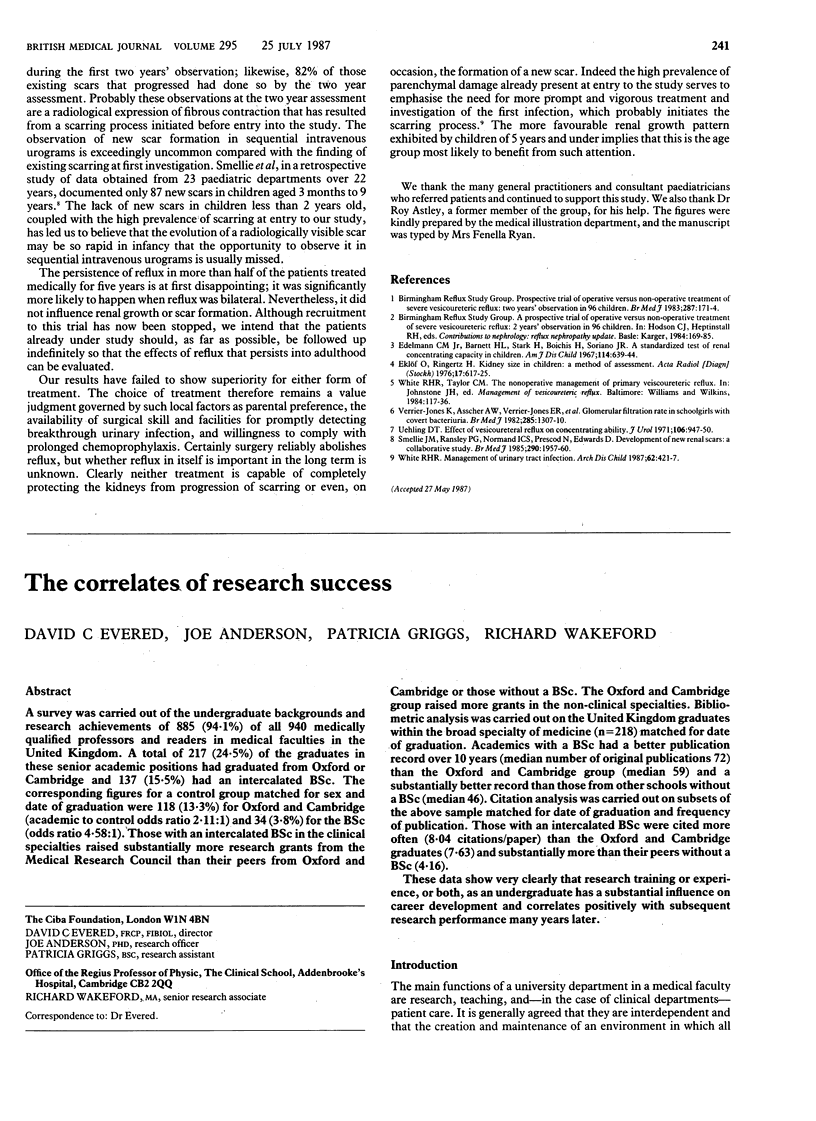

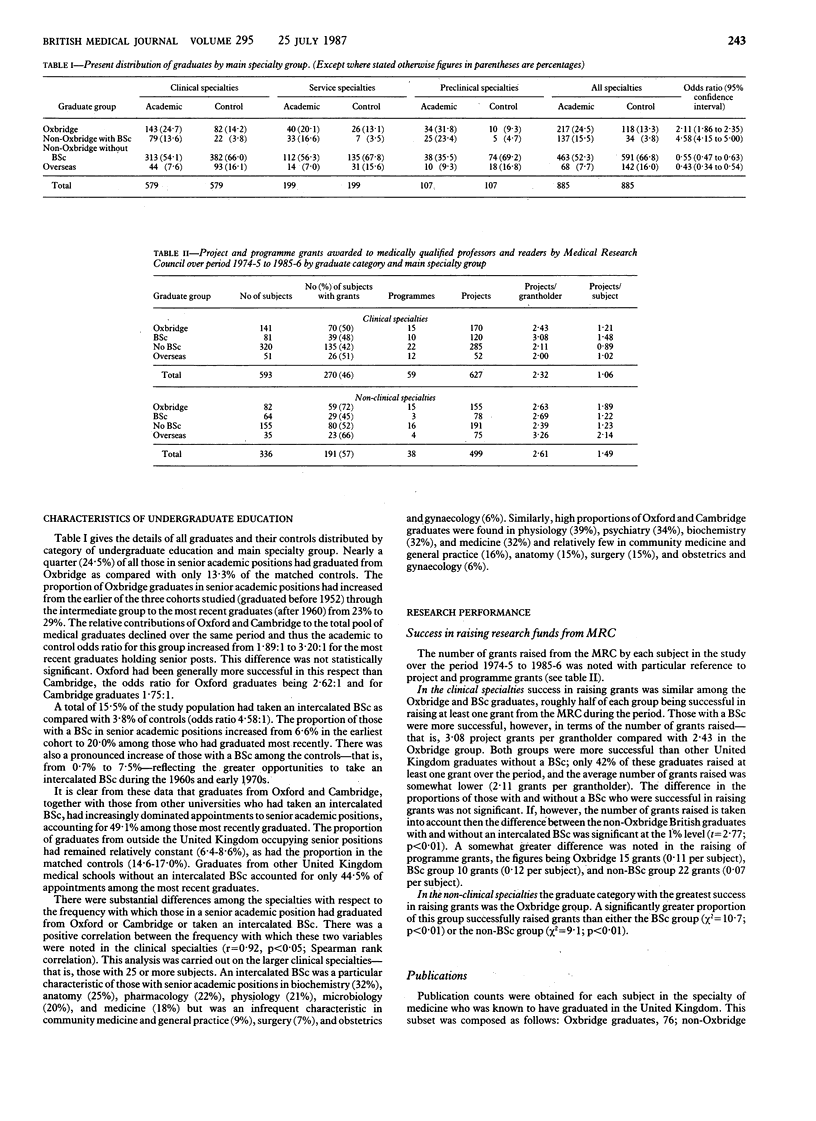
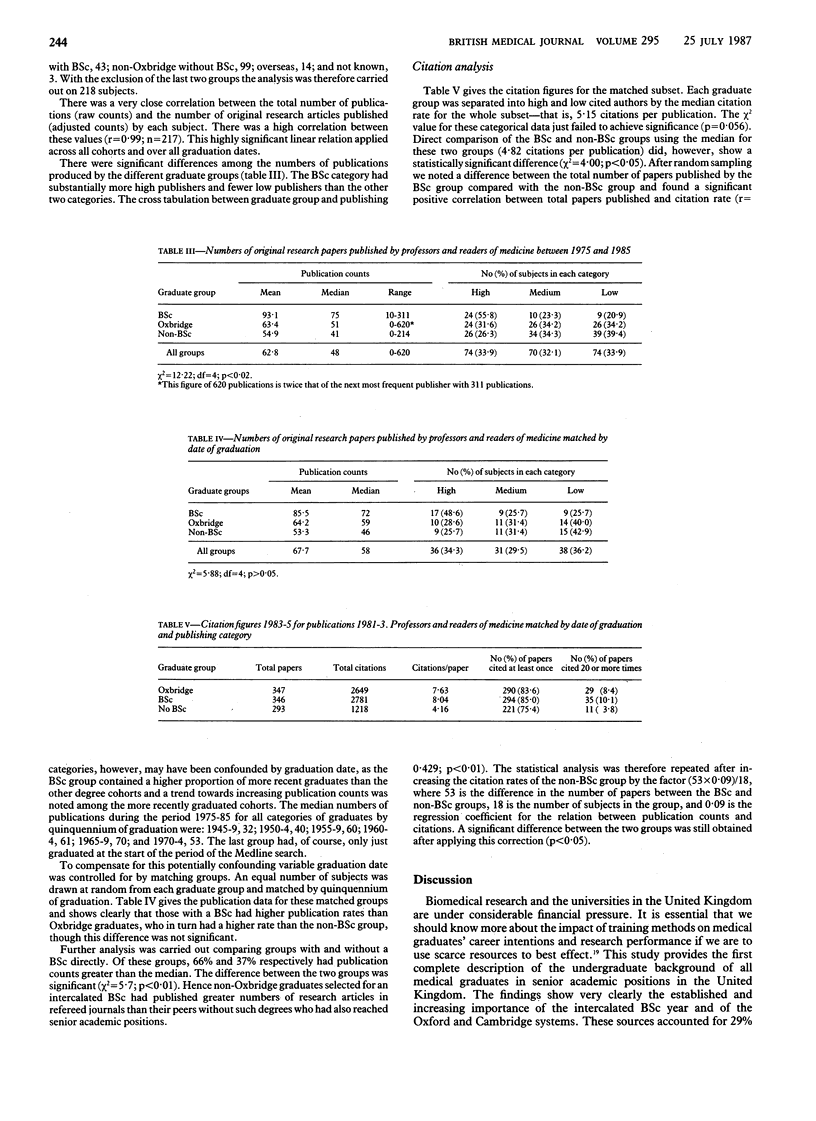
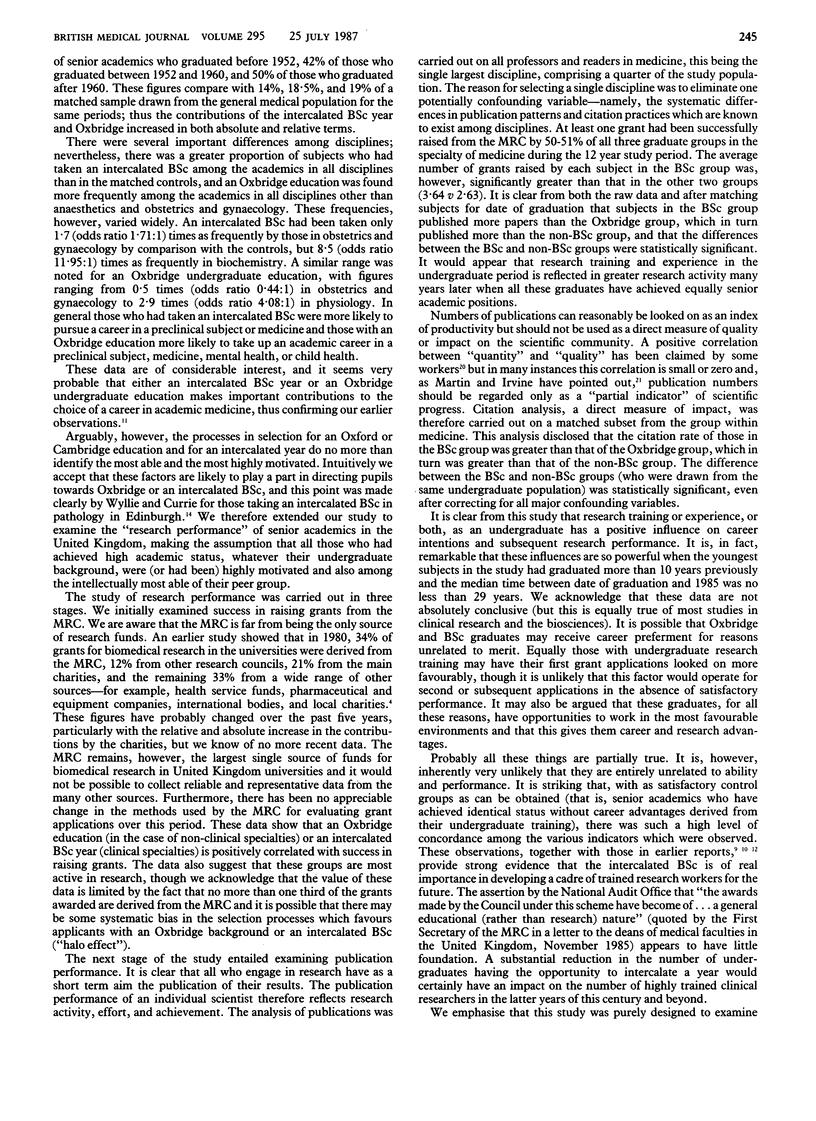
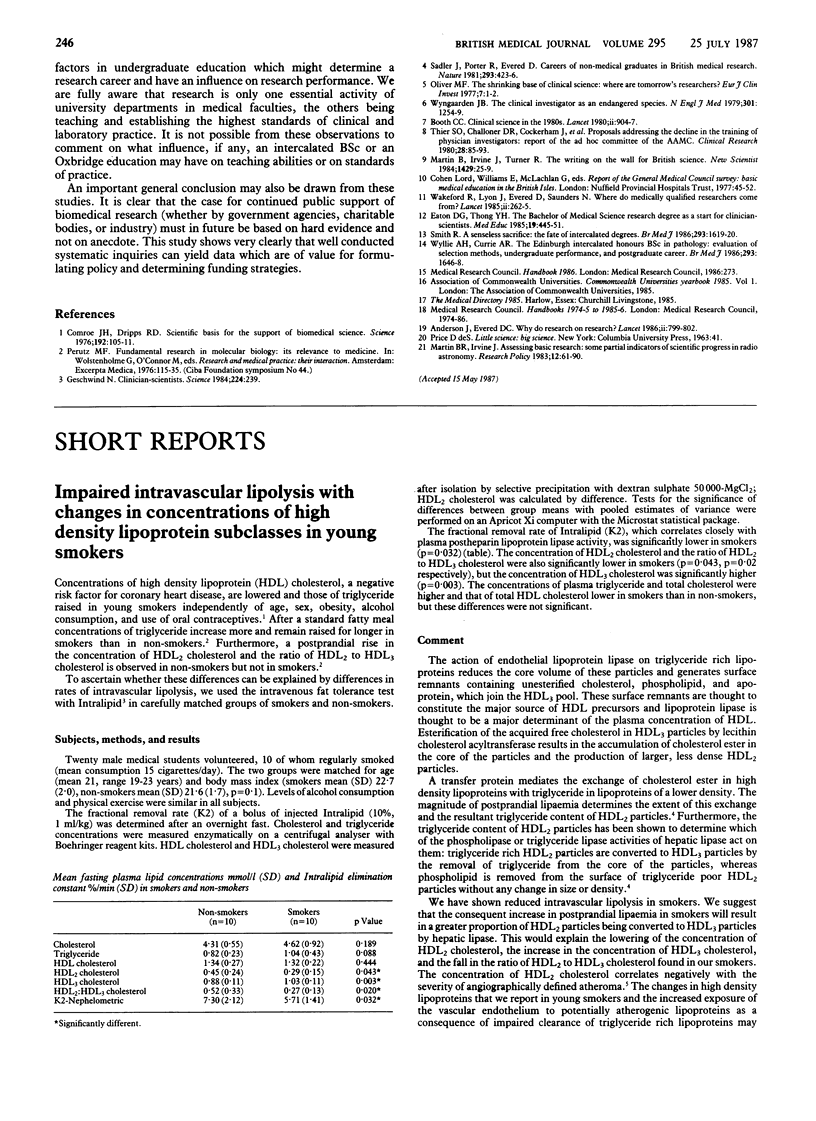
Selected References
These references are in PubMed. This may not be the complete list of references from this article.
- Anderson J., Evered D. C. Why do research on research? Lancet. 1986 Oct 4;2(8510):799–802. doi: 10.1016/s0140-6736(86)90312-0. [DOI] [PubMed] [Google Scholar]
- Booth C. C. Clinical science in the 1980s. Lancet. 1980 Oct 25;2(8200):904–907. doi: 10.1016/s0140-6736(80)92060-7. [DOI] [PubMed] [Google Scholar]
- Comroe J. H., Jr, Dripps R. D. Scientific basis for the support of biomedical science. Science. 1976 Apr 9;192(4235):105–111. doi: 10.1126/science.769161. [DOI] [PubMed] [Google Scholar]
- Eaton D. G., Thong Y. H. The Bachelor of Medical Science research degree as a start for clinician-scientists. Med Educ. 1985 Nov;19(6):445–451. doi: 10.1111/j.1365-2923.1985.tb01352.x. [DOI] [PubMed] [Google Scholar]
- Geschwind N. Clinician-scientists. Science. 1984 Apr 20;224(4646):239–239. doi: 10.1126/science.6710141. [DOI] [PubMed] [Google Scholar]
- Sadler J., Porter R., Evered D. Careers of non-medical graduates in British medical research. Nature. 1981 Oct 8;293(5832):423–426. doi: 10.1038/293423a0. [DOI] [PubMed] [Google Scholar]
- Smith R. A senseless sacrifice: the fate of intercalated degrees. Br Med J (Clin Res Ed) 1986 Jun 21;292(6536):1619–1620. doi: 10.1136/bmj.292.6536.1619-a. [DOI] [PMC free article] [PubMed] [Google Scholar]
- Wakeford R., Lyon J., Evered D., Saunders N. Where do medically qualified researchers come from? Lancet. 1985 Aug 3;2(8449):262–265. doi: 10.1016/s0140-6736(85)90303-4. [DOI] [PubMed] [Google Scholar]
- Wyllie A. H., Currie A. R. The Edinburgh intercalated honours BSc in pathology: evaluation of selection methods, undergraduate performance, and postgraduate career. Br Med J (Clin Res Ed) 1986 Jun 21;292(6536):1646–1648. doi: 10.1136/bmj.292.6536.1646. [DOI] [PMC free article] [PubMed] [Google Scholar]
- Wyngaarden J. B. The clinical investigator as an endangered species. N Engl J Med. 1979 Dec 6;301(23):1254–1259. doi: 10.1056/NEJM197912063012303. [DOI] [PubMed] [Google Scholar]


